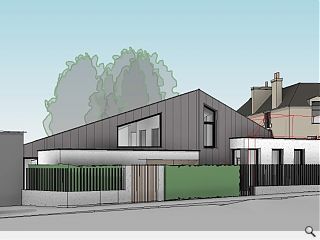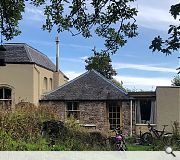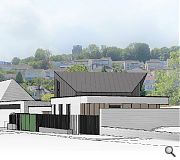Passivhaus Plus Blackford dwelling powers ahead
October 29 2020
A dated dwelling in Blackford, Edinburgh, is to give way to a modern Passivhaus Plus home - a class of energy-efficient design which stipulates on-site production of all net energy needs.
Driven by Grigor Mitchell Architect the proposals call for the current home on Blackford Avenue to be demolished, opening up the corner plot adjacent to the railway line for the innovative design.
Intended to establish a sense of place in the fragmented suburban environment the new addition will marry standing seam metal cladding on roof elements, which includes an 80sq/m flush-mounted photovoltaic array, with lime render and earthen tone cladding.
Outlining the innovative approach Mitchell wrote: "The structure of the walls and roof is designed as I‐joist timber frame panels with wood fibre insulation to achieve the thermal performance requirements. Visually this creates walls which are thicker than typical buildings. Passivhaus principles of thermal bridge free design and draught-free construction will be rigorously applied during the build to limit heat loss to a minimum. The typical ‘U’ value of these elements is reduced to a maximum of 0.11 W/m2K."
It is calculated that this approach will deliver a 60% saving on CO2 emissions versus a standard timber kit design.
|
|
7 Comments
This is a real pity. Not just because the existing building are quite charming, but because I am going to have to pass this monster ever morning.
So out of context and clumsy looking.
Think green and forward!
So what exactly is 'green' about knocking down existing buildings to replace with a single zinc and white render clad dwelling fro one person/family?
Building a passive house doesn't trump the need for a building to respond to context. The form, materials (sorry architects- materiality) and relationship to the street edge is very poor.
Better, as Philip says if the design took points from the context, from the materials on site and around the area and look to reused what is already there to provide a building which not only meats the passivhaus ethos but also the lower the carbon footprint.
Post your comments
Back to October 2020
Like us on Facebook
Become a fan and share






Seems to me that the primary 'passive' element was the architects imagination for a suitable design solution.
At least the locals waiting on the bus will have something new to look at. They might even say WOW!!